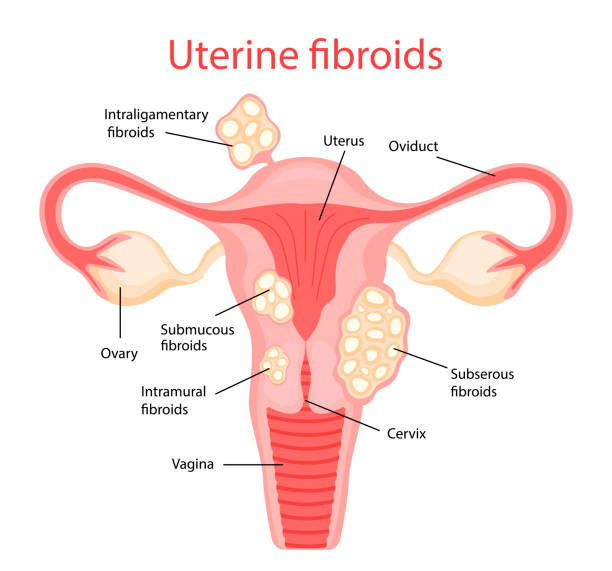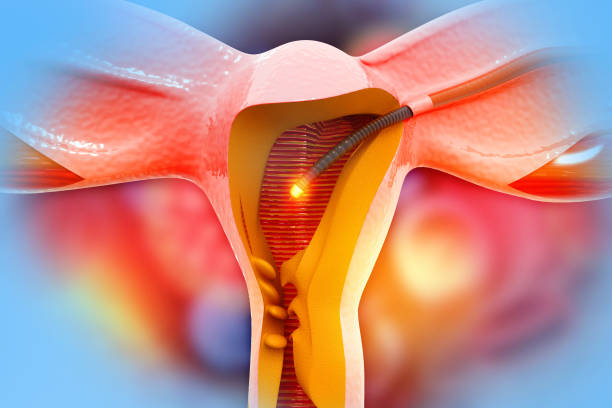
Uterine Fibroids Treatment in Mahishadal
The uterus is a vital organ in a woman’s reproductive system, yet many women experience conditions that affect their uterine health. Among them, uterine fibroids are one of the most common, affecting up to 80% of women by the age of 50 worldwide. While many fibroids are harmless, some can cause severe pain, heavy bleeding, and complications in pregnancy, requiring proper medical attention. In India, the prevalence of fibroids is significant, with 20-50% of women of reproductive age developing fibroids, yet many remain undiagnosed due to a lack of awareness.
Dr. G. S. Tunga, Founder of Healing Touch Nursing Home, a cutting-edge hospital in Mahishadal, West Bengal, says:
“Uterine fibroids are often underestimated, but they can impact a woman’s quality of life in multiple ways. Timely diagnosis and treatment can prevent severe complications, including anemia, fertility issues, and chronic pain. Each patient’s case is unique, so treatment should be tailored based on symptoms, fibroid size, and reproductive goals.”

Fibroids are more common than many women realize, but what exactly are they? Let’s break it down.
What Are Uterine Fibroids?
Uterine leiomyomas, commonly known as uterine fibroids, are benign or non-cancerous growths that grow in the muscle tissue of the uterus. They can range from as small as a seed to as large as a melon, sometimes distorting the shape of the uterus. While some women experience no symptoms, others may suffer from heavy menstrual bleeding, pelvic pain, frequent urination, and reproductive complications.
Fibroids are more common than many women realize, but what exactly are they? Let’s break it down.
Types of Uterine Fibroids
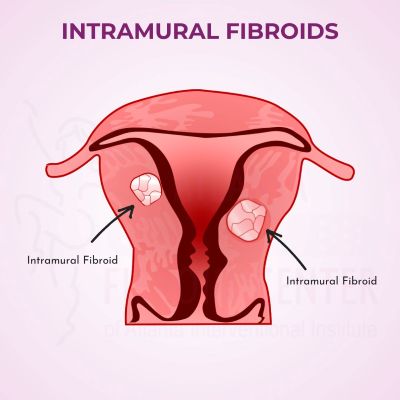
Intramural Fibroids
The most common type, growing within the muscular wall of the uterus.
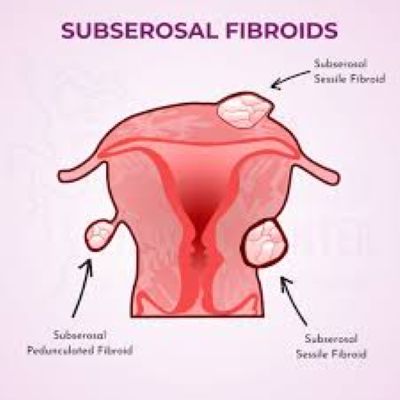
Subserosal Fibroids
Develop on the outer layer of the uterus and can press on nearby organs.
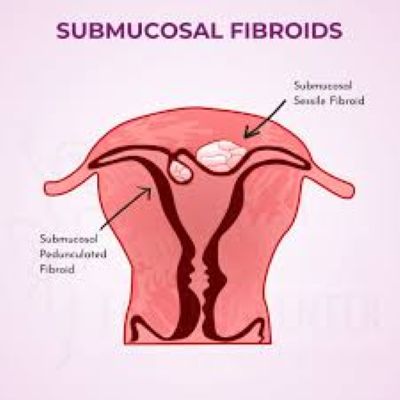
Submucosal Fibroids
Grow inside the uterine cavity, often causing severe bleeding and fertility issues.

Pedunculated Fibroids
Attached to the uterus by a stalk-like structure, sometimes leading to twisting and intense pain.
Are you experiencing irregular periods, pelvic pain, or heavy bleeding? These could be signs of fibroids. Consult a specialist today to get the right diagnosis and treatment
To manage fibroids effectively, the first step is proper diagnosis. Here’s how we evaluate uterine fibroids.
Diagnosis & Evaluation of Uterine Fibroids at Healing Touch Nursing Home
Accurate diagnosis is the foundation of effective treatment. At Healing Touch Nursing Home, we use advanced diagnostic techniques to assess fibroids and their impact on your health.
Diagnostic Methods Include:
Pelvic Examination: A routine exam to check for abnormalities in the uterus.
Ultrasound Imaging: High-frequency sound waves create detailed images of fibroids, helping assess their size and location.
MRI Scan: Used in complex cases to provide a detailed view of fibroids and surrounding organs.
Hysteroscopy: A thin, lighted tube is inserted into the uterus to examine the inner walls and detect submucosal fibroids.
Sonohysterography: A specialized ultrasound that injects saline into the uterus for better visualization of fibroids.
Blood Tests: To check for anemia (caused by excessive blood loss) and hormonal imbalances.
Once the fibroids are diagnosed, the next step is choosing the most effective treatment. Let’s explore the available options.
Our Treatment Approach – Surgical & Non-Surgical Options
The best treatment for Uterine Fibroids depends on the patient’s size, location, symptoms, and future pregnancy plans. At Healing Touch Nursing Home, we provide a comprehensive approach, including both non-surgical and surgical options.
Non-Surgical Treatments
- Medications: Hormonal therapies, such as birth control pills or GnRH agonists, help shrink fibroids and control bleeding.
- Uterine Fibroid Embolization (UFE): A minimally invasive procedure that blocks the blood supply to fibroids, causing them to shrink.
- Lifestyle Modifications: A balanced diet, exercise, and stress management can help manage symptoms naturally.
Surgical Treatments
- Myomectomy: A surgery that removes fibroids while preserving the uterus, ideal for women planning future pregnancies.
- Hysteroscopic Myomectomy: A minimally invasive procedure used to remove fibroids inside the uterine cavity.
- Hysterectomy: A last-resort option where the uterus is removed in severe cases, providing a permanent solution to fibroids.
Wondering which fibroid treatment is right for you? Speak with a medical expert today and explore the best options for your health.
Choosing the right healthcare provider is crucial for effective management and long-term relief.
Why Choose Healing Touch Nursing Home for Uterine Fibroids Treatment?
Here’s why Healing Touch Nursing Home is a trusted choice for Uterine Fibroids Treatment in Mahishadal:
Experienced Gynecologists: Led by Dr. G. S. Tunga, a highly skilled gynecologist in Mahishadal, West Bengal.
Advanced Technology: Cutting-edge diagnostic and surgical equipment for precise fibroid treatment.
Personalized Care: Every treatment plan is tailored to the patient’s unique condition and future goals.
Minimally Invasive Procedures: We prioritize non-surgical and minimally invasive treatments for faster recovery.
Compassionate Support: From diagnosis to recovery, we provide emotional and medical support at every stage.
Empanelled Under Swasthya Sathi: As a recognized hospital under the Swasthya Sathi scheme, we offer cashless fibroid treatment, ensuring that financial constraints do not prevent access to quality care.
Choosing the right healthcare provider is crucial for effective management and long-term relief.
FAQs
What is the best treatment for uterine fibroids?
The best treatment varies based on size, symptoms, and reproductive plans. Options range from medications and embolization to myomectomy or hysterectomy in severe cases.
Can a woman live with a fibroid?
Yes, many women live with asymptomatic fibroids that don’t require treatment. However, regular monitoring is necessary to ensure they don’t grow or cause complications.
Can fibroids be treated without surgery?
Yes, non-surgical options like medications, lifestyle changes, and uterine fibroid embolization can help manage symptoms.
What size fibroids need surgery?
Fibroids larger than 5 cm, or those causing severe symptoms, often require surgical removal through myomectomy or hysterectomy.
What happens if uterine fibroids are not removed?
Untreated fibroids can grow in size, cause severe bleeding, infertility, and pressure on surrounding organs. Early intervention is essential.
Why do people get fibroids?
Fibroids develop due to hormonal imbalances, particularly increased estrogen and progesterone levels, which promote their growth. Genetic factors, obesity, and lifestyle choices may also affect their development.
What is the fastest way to cure fibroids?
The fastest way to treat fibroids depends on their size, symptoms, and the patient’s condition. Minimally invasive procedures such as uterine artery embolization and laparoscopic myomectomy can provide quick relief while preserving the uterus.
Is there a permanent solution for uterine fibroids?
While some treatments shrink or remove fibroids, the only permanent solution is a hysterectomy to eliminate the possibility of fibroids returning. However, less invasive options can effectively manage symptoms and improve quality of life.
Don’t let fibroids affect your health and quality of life. Consult a specialist today for expert guidance and the best treatment options!
Disclaimer: The information shared in this content is for educational purposes only and not for promotional use.

